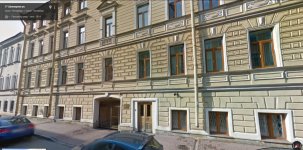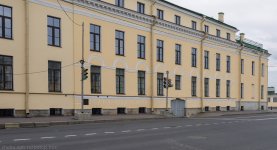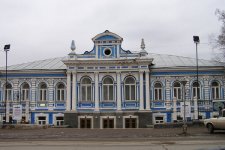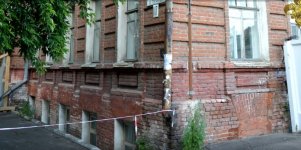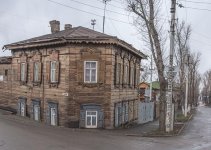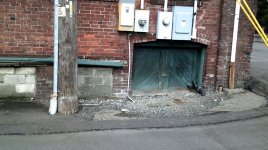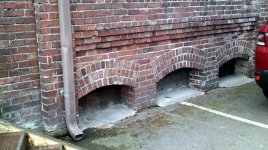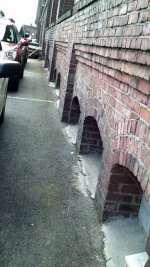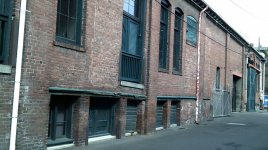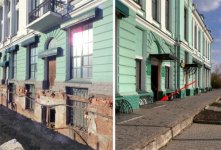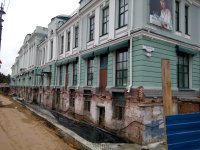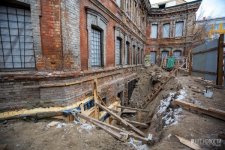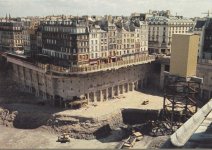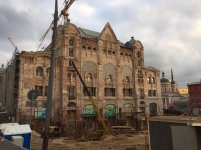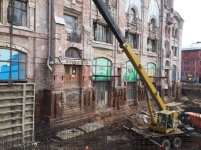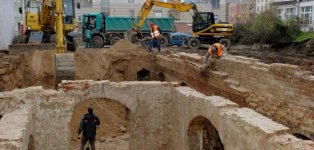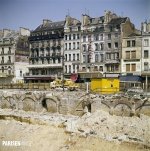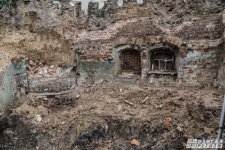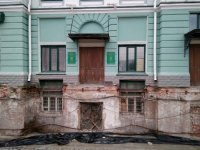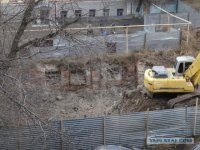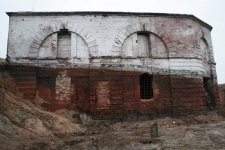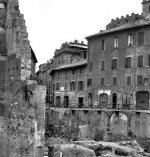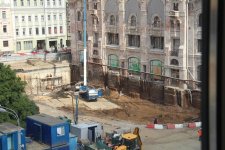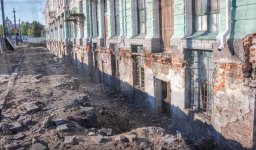The MUD FLOOD
Apparently, there is this theory in Russia, that Peter the Great was not the founder of Saint Petersburg. He did not build it, he dug it out. Yes, you heard it right. Supposedly, a whole lot of dirt was removed, and from beneath emerged the city. This is clearly not an official version. Yet, there are some reasons for this theory to exist, especially after looking at the engravings done by Giovanni Battista Piranesi.Piranesi was creating his immortal art in the 18th century. The buildings I wanted to talk about, for the most part were constructed in the 19th. Yet, these building have clearly accumulated quite a few feet of the so-called "cultural layer". Some might say that those buildings settled down with time. The other explanation would be that these buildings were built this way.
For better visualization of what I'm talking about, let us take a look at the image below.
Basically what we have is a building, with the bottom floor windows looking different from the windows above. These windows in question are either entirely, or partially below the ground level. Here are a few buildings demonstrating this trait.
Additional variations may include the below.
Let us contemplate some of the official explanations:
- Cultural Layer version
So what they are saying is that your house is getting buried in dirt and crap, and instead of sweeping the dirt away, you wait till it entirely buries the first floor. Then you use one of the second floor windows and make yourself a new door, because the actual one is 6 feet under. I do not know about you, but I do not buy it. There are plenty of city photos showing these very same buildings at the exact same level 100 ears ago.
- Settle down version
The city is built on a mixture of clay and volcanic soil, it is drowning, causing dangerous cracks in its buildings.
Not buying this explanation either. If some building was built on the soft dirt, and settled down, it would be obvious. Also, these "settle down" instances, would not be epidemic, but rather sporadic limited to a few specific locations. Yet, we have this "buried" buildings in just about every country of the world. And giving builders some credit, they would probably figure out how to handle the issue of unsettled, or soft dirt.
- Buildings were built this way version
Here, a gentleman has to do some acrobatics to enter the building.
A very common issue they have in Denmark, I've heard.

A very common issue they have in Denmark, I've heard.
Now let us look at some of the buildings freed from multiple feet of dirt. The below images are primarily from Russia, but doubt the results would be any different for any other country.
In the above images we can clearly see doors cut out above actual excavated doors. Which means there was another door before, but for whatever reason it ended up 10 feet below the ground level.
Just below you can see two pictures of the Russian Winter Palace located in Saint Petersburg. On the 18th century engraving you can see what it looked like when the engraving was done. And right below it, is what Winter Palace looks like today. 1/3 of this structure is currently located under the ground level. Guess how many history professors can tell you why. Actually all of them, probably. It is 20 feet of accumulated "cultural layer", I bet.
The problem we have, pertains to the age of these buildings. They are not that old. Supposedly they were built in the 19th century, with some even in the 20th. Occasionally we have 18th and 17th. Yet, the history does not provide any specific account for an event of such magnitude. I know I was not taught of anything which could have caused this in the 19th century.
This issue is not Russia specific. It is very common in Europe. I'm pretty sure people people in London are very familiar with the type of sunk buildings I'm talking about. But it also exists in the United States, Canada, Mexico, New Zealand, countries of South Africa, and South America. These buried buildings are all over the place (will update with various countries pictures later).
USA
Below is Seattle. One photo is Pioneer square, and the other
one is not far from the University of Washington.


Spain



England


Denmark



Czech Republic


Below is Seattle. One photo is Pioneer square, and the other
one is not far from the University of Washington.


Spain


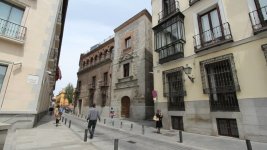
England


Denmark



Czech Republic


KD: This list could go on and on. Yet we know nothing of what might have caused it. This is a lot of dirt to arrive unnoticed. Do you know where it came from?


